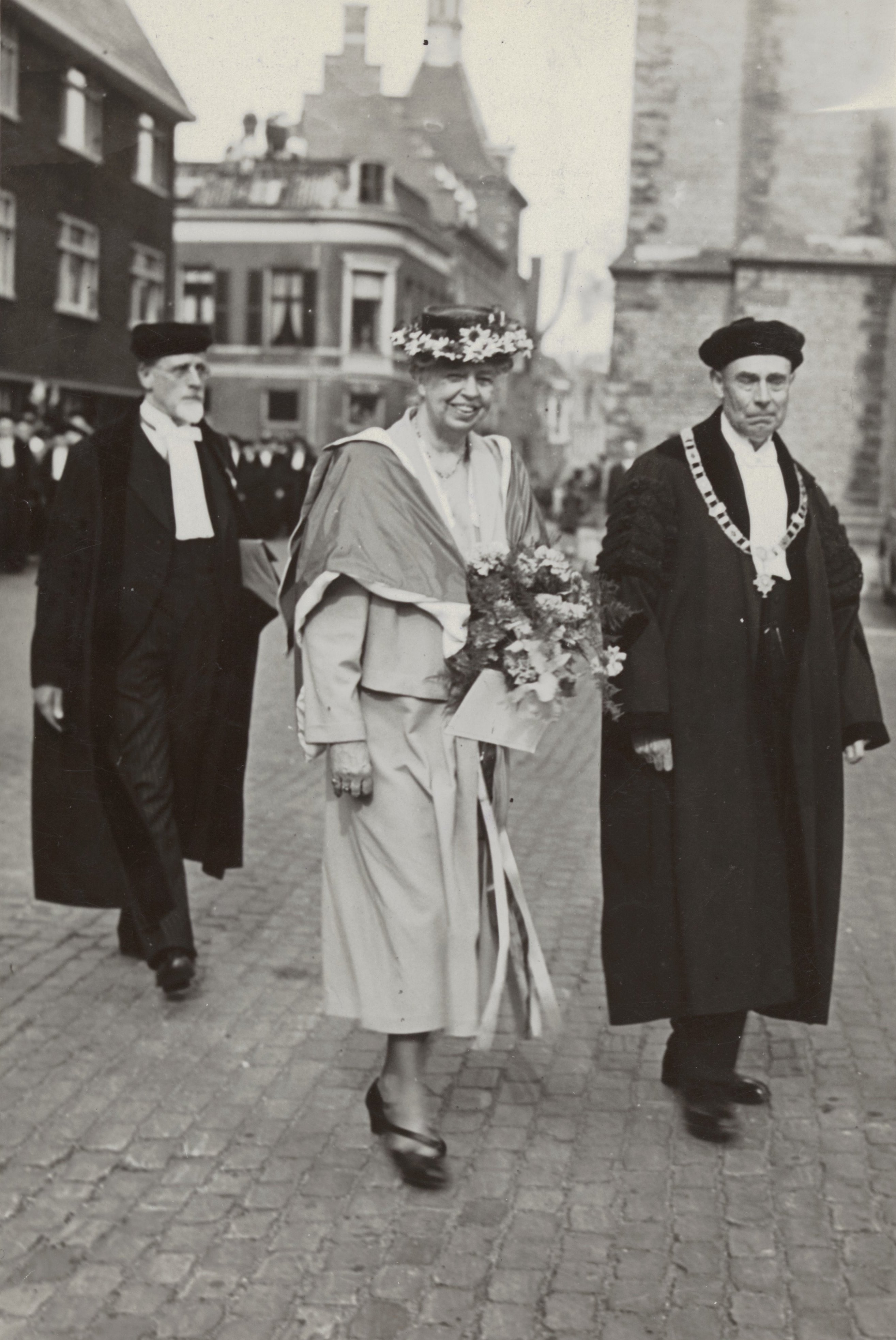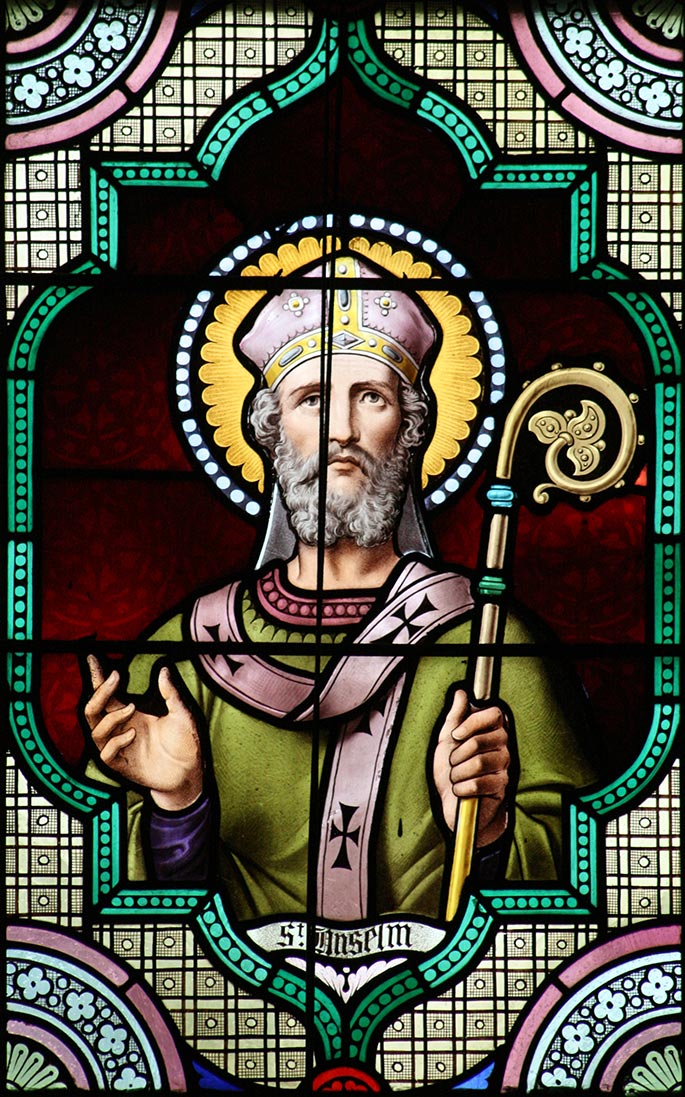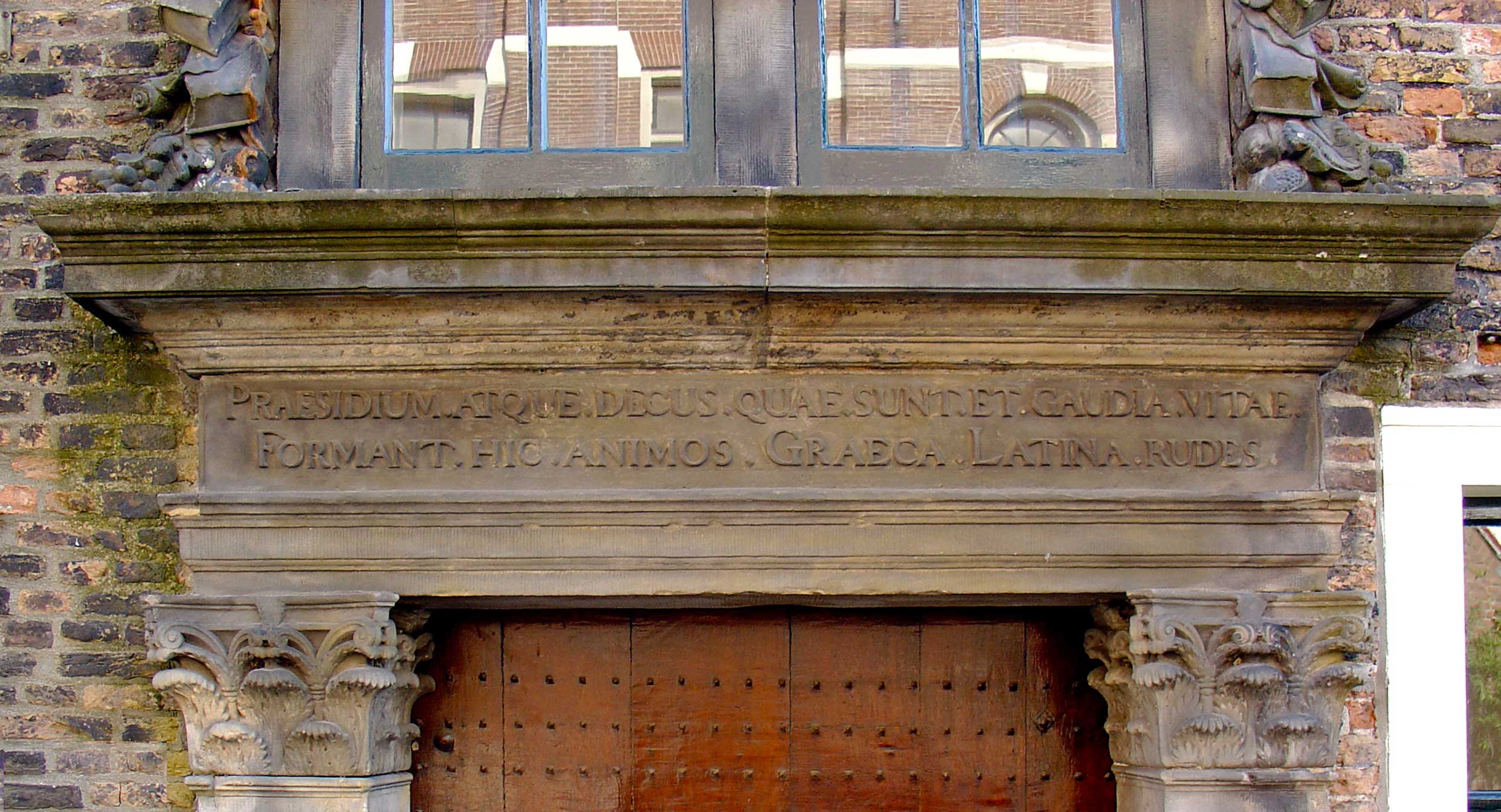|
Pieter Van Musschenbroek
Pieter van Musschenbroek (14 March 1692 – 19 September 1761) was a Dutch scientist. He was a professor in Duisburg, Utrecht, and Leiden, where he held positions in mathematics, philosophy, medicine, and astronomy. He is credited with the invention of the first capacitor in 1746: the Leyden jar. He performed pioneering work on the buckling of compressed struts. Musschenbroek was also one of the first scientists (1729) to provide detailed descriptions of testing machines for tension, compression, and flexure testing. An early example of a problem in dynamic plasticity was described in the 1739 paper (in the form of the penetration of butter by a wooden stick subjected to impact by a wooden sphere). Early life and studies Pieter van Musschenbroek was born on 14 March 1692 in Leiden, Holland, Dutch Republic. His father was Johannes van Musschenbroek and his mother was Margaretha van Straaten. The Van Musschenbroeks, originally from Flanders, had lived in the city of Leiden since ... [...More Info...] [...Related Items...] OR: [Wikipedia] [Google] [Baidu] |
Leiden
Leiden ( ; ; in English language, English and Archaism, archaic Dutch language, Dutch also Leyden) is a List of cities in the Netherlands by province, city and List of municipalities of the Netherlands, municipality in the Provinces of the Netherlands, province of South Holland, Netherlands. The municipality of Leiden has a population of 127,046 (31 January 2023), but the city forms one densely connected agglomeration with its suburbs Oegstgeest, Leiderdorp, Voorschoten and Zoeterwoude with 215,602 inhabitants. The Statistics Netherlands, Netherlands Central Bureau of Statistics (CBS) further includes Katwijk in the agglomeration which makes the total population of the Leiden urban agglomeration 282,207 and in the larger Leiden urban area also Teylingen, Noordwijk, and Noordwijkerhout are included with in total 365,913 inhabitants. Leiden is located on the Oude Rijn (Utrecht and South Holland), Oude Rijn, at a distance of some from The Hague to its south and some from Amsterdam ... [...More Info...] [...Related Items...] OR: [Wikipedia] [Google] [Baidu] |
Scientific Instrument
A scientific instrument is a device or tool used for scientific purposes, including the study of both natural phenomena and theoretical research. History Historically, the definition of a scientific instrument has varied, based on usage, laws, and historical time period. Before the mid-nineteenth century such tools were referred to as "natural philosophical" or "philosophical" apparatus and instruments, and older tools from antiquity to the Middle Ages (such as the astrolabe and pendulum clock) defy a more modern definition of "a tool developed to investigate nature qualitatively or quantitatively." Scientific instruments were made by mathematical practitioner, instrument makers living near a center of learning or research, such as a university or research laboratory. Instrument makers designed, constructed, and refined instruments for purposes, but if demand was sufficient, an instrument would go into production as a commercial product. In a description of the use of the eudiomet ... [...More Info...] [...Related Items...] OR: [Wikipedia] [Google] [Baidu] |
Fellow Of The Royal Society
Fellowship of the Royal Society (FRS, ForMemRS and HonFRS) is an award granted by the Fellows of the Royal Society of London to individuals who have made a "substantial contribution to the improvement of natural science, natural knowledge, including mathematics, engineering science, and medical science". Overview Fellowship of the Society, the oldest known scientific academy in continuous existence, is a significant honour. It has been awarded to :Fellows of the Royal Society, around 8,000 fellows, including eminent scientists Isaac Newton (1672), Benjamin Franklin (1756), Charles Babbage (1816), Michael Faraday (1824), Charles Darwin (1839), Ernest Rutherford (1903), Srinivasa Ramanujan (1918), Jagadish Chandra Bose (1920), Albert Einstein (1921), Paul Dirac (1930), Subrahmanyan Chandrasekhar (1944), Prasanta Chandra Mahalanobis (1945), Dorothy Hodgkin (1947), Alan Turing (1951), Lise Meitner (1955), Satyendra Nath Bose (1958), and Francis Crick (1959). More recently, fellow ... [...More Info...] [...Related Items...] OR: [Wikipedia] [Google] [Baidu] |
University Of Utrecht
Utrecht University (UU; , formerly ''Rijksuniversiteit Utrecht'') is a public research university in Utrecht, Netherlands. Established , it is one of the oldest universities in the Netherlands. In 2023, it had an enrollment of 39,769 students, and employed 8,929 faculty members and staff. More than 400 PhD degrees were awarded and 7,765 scientific articles were published. The university's 2023 budget was €2.8 billion, consisting of €1.157 billion for the university (income from work commissioned by third parties is 319 million euros) and €1.643 billion for the University Medical Center Utrecht. The university's interdisciplinary research targets life sciences, pathways to sustainability, dynamics of youth, and institutions for open societies. Utrecht University is led by the University Board, consisting of Wilco Hazeleger (Rector Magnificus), Anton Pijpers (chair), Margot van der Starre (Vice Chair) and Niels Vreeswijk (Student Assessor). Close ties are harboured with ot ... [...More Info...] [...Related Items...] OR: [Wikipedia] [Google] [Baidu] |
University Of Duisburg
The old University of Duisburg was a university in Duisburg, Germany. History Its origins date back to the 1555 decision to create a university for the unified duchies at the Lower Rhine that were later to be merged into Prussia. After the foundation of an academic college in 1559, a university was founded in 1655 by Frederick William, Elector of Brandenburg, the "Great Elector". The university had four faculties: Theology, Medicine, Law and Arts. During its period of activity it was one of the central and leading universities of the western provinces of Prussia. In the time the university existed many famous men graduated (listed in the German version of this article). It existed until 1818, when it was closed by King Frederick William III of Prussia. At the same time the University of Bonn was founded, which was given most of the library of the closed down University of Duisburg. In 1968, the university was founded again in Duisburg, related to the old one, bearing the name: ''Co ... [...More Info...] [...Related Items...] OR: [Wikipedia] [Google] [Baidu] |
Ontological Argument
In the philosophy of religion, an ontological argument is a deductive philosophical argument, made from an ontological basis, that is advanced in support of the existence of God. Such arguments tend to refer to the state of being or existing. More specifically, ontological arguments are commonly conceived ''a priori'' in regard to the organization of the universe, whereby, if such organizational structure is true, God must exist. The first ontological argument in Western Christian traditionSzatkowski, Miroslaw, ed. 2012. ''Ontological Proofs Today''. Ontos Verlag. "There are three main periods in the history of ontological arguments. The first was in 11th century, when St. Anselm of Canterbury came up with the first ontological argument" (p. 22). was proposed by Saint Anselm of Canterbury in his 1078 work, '' Proslogion'' (), in which he defines God as "a being than which no greater can be conceived," and argues that such a being must exist in the mind, even in that of the pe ... [...More Info...] [...Related Items...] OR: [Wikipedia] [Google] [Baidu] |
Isaac Newton
Sir Isaac Newton () was an English polymath active as a mathematician, physicist, astronomer, alchemist, theologian, and author. Newton was a key figure in the Scientific Revolution and the Age of Enlightenment, Enlightenment that followed. His book (''Mathematical Principles of Natural Philosophy''), first published in 1687, achieved the Unification of theories in physics#Unification of gravity and astronomy, first great unification in physics and established classical mechanics. Newton also made seminal contributions to optics, and Leibniz–Newton calculus controversy, shares credit with German mathematician Gottfried Wilhelm Leibniz for formulating calculus, infinitesimal calculus, though he developed calculus years before Leibniz. Newton contributed to and refined the scientific method, and his work is considered the most influential in bringing forth modern science. In the , Newton formulated the Newton's laws of motion, laws of motion and Newton's law of universal g ... [...More Info...] [...Related Items...] OR: [Wikipedia] [Google] [Baidu] |
John Theophilus Desaguliers
John Theophilus Desaguliers (12 March 1683 – 29 February 1744) was a French-born British natural philosopher, clergyman, engineer and freemason who was elected to the Royal Society in 1714 as experimental assistant to Isaac Newton. He had studied at Oxford and later popularized Newtonian theories and their practical applications in public lectures. Desaguliers's most important patron was James Brydges, 1st Duke of Chandos. As a Freemason, Desaguliers was instrumental in the success of the first Grand Lodge in London in the early 1720s and served as its third Grand Master. Biography Early life and education Desaguliers was born in La Rochelle, several months after his father Jean Desaguliers, a Protestant minister, had been exiled as a Huguenot by the French government. Jean Desaguliers was ordained as an Anglican by Bishop Henry Compton of London, and sent to Guernsey. Meanwhile, the baby was baptised Jean Théophile Desaguliers in the Protestant Temple in La Rochelle, and ... [...More Info...] [...Related Items...] OR: [Wikipedia] [Google] [Baidu] |
Standard German
Standard High German (SHG), less precisely Standard German or High German (, , or, in Switzerland, ), is the umbrella term for the standard language, standardized varieties of the German language, which are used in formal contexts and for communication between different dialect areas. German is a Pluricentric language, pluricentric Abstand and ausbau languages#Roofing, Dachsprache with currently three codified (or standardised) specific national varieties: German Standard German, Austrian German#Standard Austrian German, Austrian Standard German and Swiss Standard German. Regarding the spelling and punctuation, a recommended standard is published by the Council for German Orthography which represents the governments of all majority and minority German-speaking countries and dependencies. Adherence is obligatory for government institutions, including schools. Although there is no official standards body regulating pronunciation, there is a long-standing ''de facto'' standard pronu ... [...More Info...] [...Related Items...] OR: [Wikipedia] [Google] [Baidu] |
Latin
Latin ( or ) is a classical language belonging to the Italic languages, Italic branch of the Indo-European languages. Latin was originally spoken by the Latins (Italic tribe), Latins in Latium (now known as Lazio), the lower Tiber area around Rome, Italy. Through the expansion of the Roman Republic, it became the dominant language in the Italian Peninsula and subsequently throughout the Roman Empire. It has greatly influenced many languages, Latin influence in English, including English, having contributed List of Latin words with English derivatives, many words to the English lexicon, particularly after the Christianity in Anglo-Saxon England, Christianization of the Anglo-Saxons and the Norman Conquest. Latin Root (linguistics), roots appear frequently in the technical vocabulary used by fields such as theology, List of Latin and Greek words commonly used in systematic names, the sciences, List of medical roots, suffixes and prefixes, medicine, and List of Latin legal terms ... [...More Info...] [...Related Items...] OR: [Wikipedia] [Google] [Baidu] |
Ancient Greek
Ancient Greek (, ; ) includes the forms of the Greek language used in ancient Greece and the classical antiquity, ancient world from around 1500 BC to 300 BC. It is often roughly divided into the following periods: Mycenaean Greek (), Greek Dark Ages, Dark Ages (), the Archaic Greece, Archaic or Homeric Greek, Homeric period (), and the Classical Greece, Classical period (). Ancient Greek was the language of Homer and of fifth-century Athens, fifth-century Athenian historians, playwrights, and Ancient Greek philosophy, philosophers. It has contributed many words to English vocabulary and has been a standard subject of study in educational institutions of the Western world since the Renaissance. This article primarily contains information about the Homeric Greek, Epic and Classical periods of the language, which are the best-attested periods and considered most typical of Ancient Greek. From the Hellenistic period (), Ancient Greek was followed by Koine Greek, which is regar ... [...More Info...] [...Related Items...] OR: [Wikipedia] [Google] [Baidu] |
Latin School
The Latin school was the grammar school of 14th- to 19th-century Europe, though the latter term was much more common in England. Other terms used include Lateinschule in Germany, or later Gymnasium. Latin schools were also established in Colonial America. Emphasis was placed on learning Latin, initially in its Medieval Latin form. Grammar was the most basic part of the trivium and the Liberal arts. Latin schools aimed to prepare students for university, as well as seeking to enable those of middle-class status to rise above their station. It was therefore not unusual for children of commoners to attend Latin schools, especially if they were expected to pursue a career within the church.Wiesner-Hanks, p122. Although Latin schools existed in many parts of Europe in the 14th-century and were more open to the laity, prior to that the Church allowed for Latin schools for the sole purpose of training those who would one day become clergymen.Grendler, p6. Latin schools began to devel ... [...More Info...] [...Related Items...] OR: [Wikipedia] [Google] [Baidu] |






